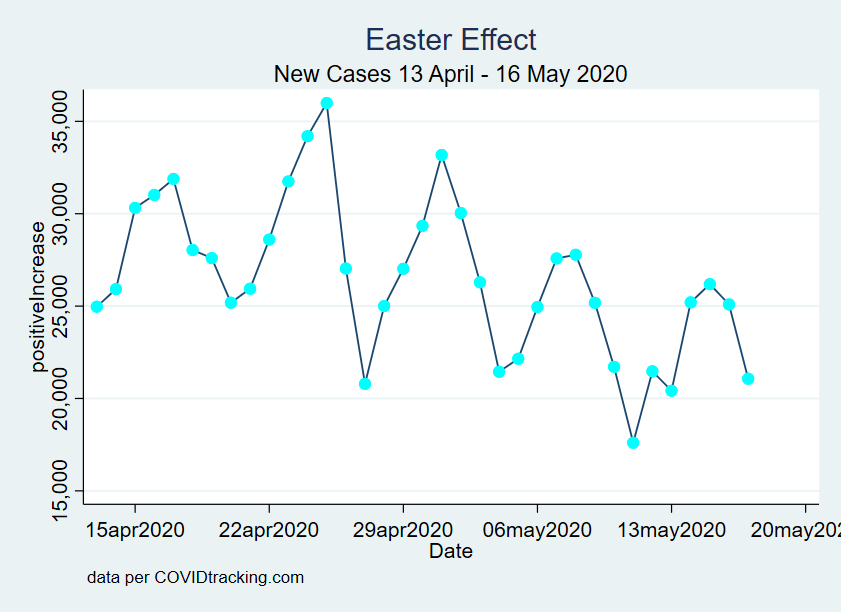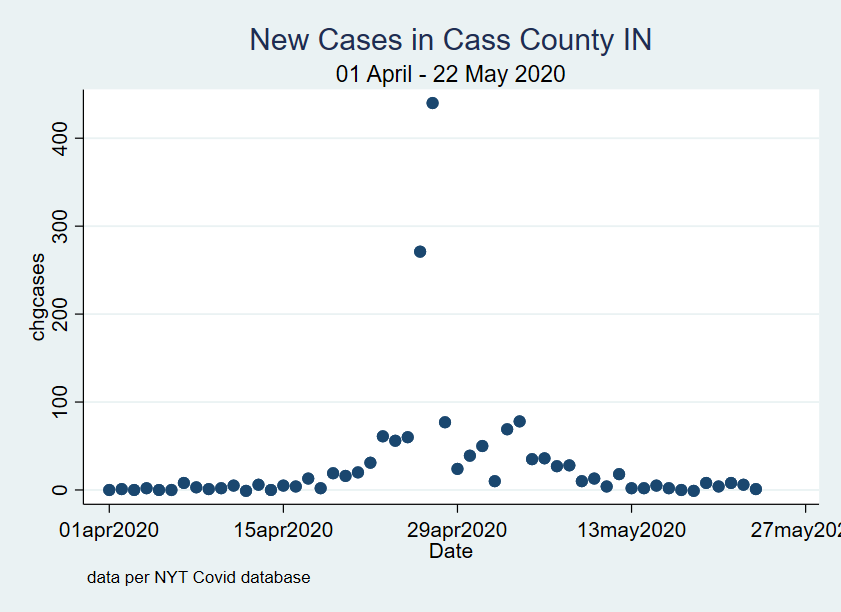As noted in my last post, I have been looking at data. This usually causes trouble, and today is no exception. As anyone who was paying attention predicted, the “Easter Effect”–a large gathering of people (“EC” or Otherwise) in an enclosed area that likely has multiple asymptomatic carriers (and likely a few with symptoms) is a recipe for infection. With a two- to three-week gestation period, that there was going to be an increase in cases at the end of April was well known. The only question was how much. Without running the numbers carefully, it looks as if it was about 10% above trend. But the overall data covers for a lot of local sins. If you look at the places that have a high percentage of people infected, the relatively large Metropolitan Areas
Topics:
Ken Houghton considers the following as important: Healthcare, Hot Topics
This could be interesting, too:
NewDealdemocrat writes JOLTS revisions from Yesterday’s Report
Joel Eissenberg writes No Invading Allies Act
Bill Haskell writes Families Struggle Paying for Child Care While Working
NewDealdemocrat writes January JOLTS report: monthly increases, but significant downward revisions to 2024
As noted in my last post, I have been looking at data. This usually causes trouble, and today is no exception.
As anyone who was paying attention predicted, the “Easter Effect”–a large gathering of people (“EC” or Otherwise) in an enclosed area that likely has multiple asymptomatic carriers (and likely a few with symptoms) is a recipe for infection. With a two- to three-week gestation period, that there was going to be an increase in cases at the end of April was well known. The only question was how much. Without running the numbers carefully, it looks as if it was about 10% above trend.
But the overall data covers for a lot of local sins. If you look at the places that have a high percentage of people infected, the relatively large Metropolitan Areas are no surprise: Providence, Worcester (MA), and NYC suburbs and exurbs (think Rockland, Westchester, Nassau, Suffolk, and Orange Counties in NY State; Passaic, Union, Hudson, Bergen, and my own Essex County in NJ).
But Cass County, Indiana, is running at over a 4% infection rate. With a County size of about 38,000 people, they’re reporting just under 1,600 cases.
Will anyone be surprised that those cases were not evenly distributed? Not really convinced this is what people have in mind when they say, “He is Risen”:
My source is the New York Times’s County-level data (h/t Charles Gaba at acasignups.net); their source is probably the Indiana State Deparment of Health, which has been getting an A+ for their data from the Covid Tracking Project.)
Data excerpt attached below.


